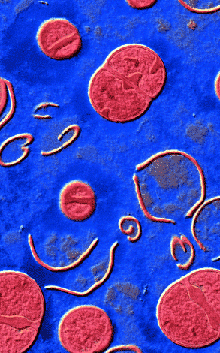Bacteria bend around antibiotics
 New research shows bacteria can change their physical shape to avoid antibiotics.
New research shows bacteria can change their physical shape to avoid antibiotics.
Adaptation is a fundamental part of evolution; allowing organisms to change their traits and behaviour to better fit their environment.
In the case of bacteria, this means adapting to resist antibiotic treatments.
Researchers have been studying how the shape of a cell can have major effects on its reproduction and survival. In the latest project, a team at Carnegie Mellon University worked with international colleagues to find out how exposure to antibiotics affects the growth and morphologies of the bacterium Caulobacter crescentus; a commonly used model organism.
The study was able to “demonstrate that cell shape changes act as a feedback strategy to make bacteria more adaptive to surviving antibiotics,” according to researcher Prof Shiladitya Banerjee.
When exposed to less than lethal doses of the antibiotic chloramphenicol over multiple generations, the researchers found that the bacteria dramatically changed their shape by becoming wider and more curved.
“These shape changes enable bacteria to overcome the stress of antibiotics and resume fast growth,” Prof Banerjee said.
The researchers suggest these physical changes allow the bacteria to attain a higher curvature and lower surface-to-volume ratio, which would allow fewer antibiotic particles to pass through their cellular surfaces as they grow.
The full study is accessible here.








 Print
Print